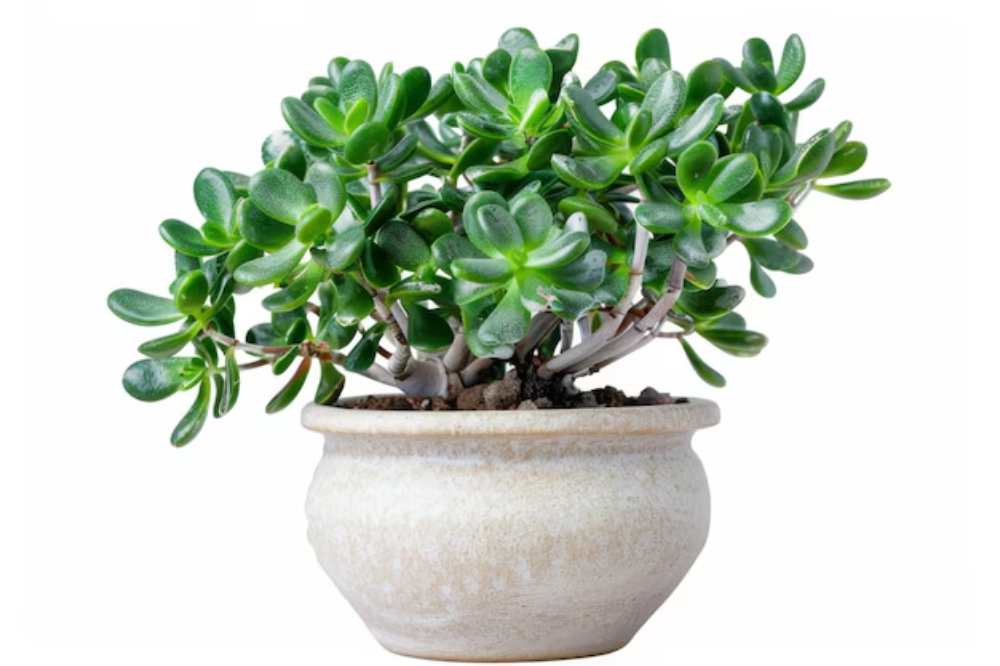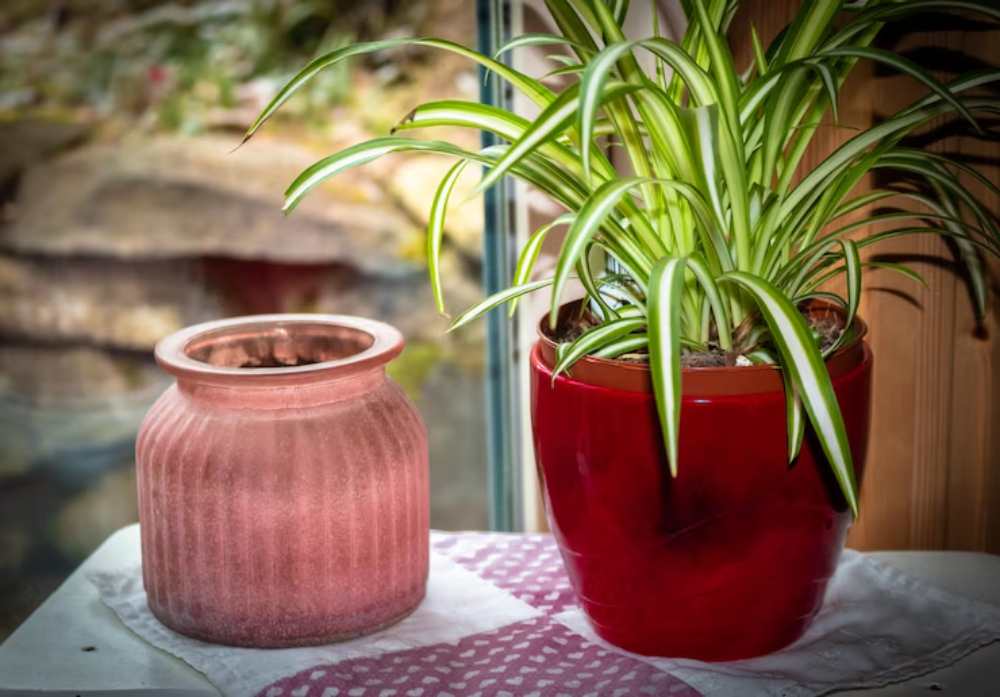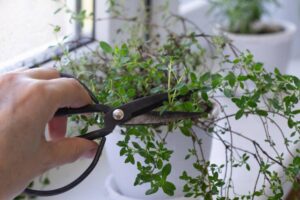The Interior Blog

Lucky Indoor Plants for Prosperity and Harmony
You may not think of a leafy green as a magnet for wealth or wellbeing, but for thousands of years, cultures around the world have believed exactly that. From ancient Chinese Feng Shui to modern interior styling trends, certain plants are celebrated for their symbolism, shape, and energy-enhancing qualities.
Whether you’re refreshing your space or simply want to feel more at ease at home, lucky houseplants offer more than just visual charm. They’re said to clear negative energy, boost positive chi (life force), and align your space with abundance and harmony. The best part? You don’t need to be a spiritual expert or a plant enthusiast to get started.
In this guide, we’ll walk through the most revered feng shui plants, where to place them for maximum effect, and how to style them with intention. You’ll also discover beginner-friendly tips for maintaining your lucky greenery — and creating a home that feels as good as it looks.
What makes a plant “lucky” in Feng Shui?
In Feng Shui, everything carries energy, including plants.
Specific types are believed to bring particular benefits depending on their:
- Shape (round or coin-shaped leaves attract wealth)
- Growth pattern (upward = success, climbing = progress)
- Symbolism or traditional use
- Effect on space (cleansing air, calming flow, softening harsh corners)
When placed in the right zone of your home using the Bagua map (more on that shortly), these plants can enhance aspects of your life, from finances and relationships to health and creativity.
Explore related styling tips in this blog on Best Indoor Plants for the Entryway & Hallway Styling
Top lucky houseplants and what they attract
1. Money Tree (Pachira aquatica)
Symbolism: Wealth, success, opportunity
Energy type: Strong wood element
Ideal placement: Southeast (wealth), near entryways
With its braided trunk and glossy leaves, the money tree is one of the most iconic feng shui plants. It’s said to trap wealth in its twists and promote financial stability.
Care tips:
- Bright, indirect light
- Water weekly when soil is dry
- Avoid overwatering (root rot risk)
2. Jade Plant (Crassula ovata)

Symbolism: Prosperity, good fortune, long-lasting friendships
Energy type: Earth and wood
Ideal placement: Southeast for wealth, east for family harmony
With plump, rounded leaves resembling coins, the jade plant is often gifted to new homeowners and entrepreneurs.
Care tips:
- Needs sunlight — a bright windowsill is best
- Water only when soil is fully dry
- Prune to encourage bushy growth
3. Lucky Bamboo (Dracaena sanderiana)
Symbolism: Health, flexibility, growth
Energy type: Wood and water
Ideal placement: East for health, southeast for wealth
Lucky bamboo is deeply rooted in feng shui tradition. The number of stalks also matters — 3 for happiness, 5 for health, 8 for prosperity.
Care tips:
- Grows in water or soil
- Use filtered water, change it every 10–14 days
- Keep out of direct sunlight
4. Peace Lily (Spathiphyllum)
Symbolism: Peace, purity, renewal
Energy type: Water
Ideal placement: Bedroom, bathroom, centre of home
Elegant and easy to care for, the peace lily balances moisture in the air and purifies toxins — both key to creating restful spaces.
Care tips:
- Medium to low light
- Water when top inch of soil is dry
- Wipe leaves to keep them dust-free
5. Snake Plant (Sansevieria trifasciata)

Symbolism: Protection, strength, resilience
Energy type: Strong upward (yang) energy
Ideal placement: Entryway, office, corners
Known for its vertical, sword-like leaves, the snake plant cuts through stagnant or negative energy. When used mindfully, it brings grounding and clarity.
Care tips:
- Thrives on neglect
- Low-light tolerant
- Water sparingly (every 2–3 weeks)
6. Rubber Plant (Ficus elastica)
Symbolism: Abundance, positivity, shielding energy
Energy type: Earth and wood
Ideal placement: Living room corners, near windows
With its rich green, rounded leaves, the rubber plant has a strong but calming presence. It balances space while cleansing the air.
Care tips:
- Likes indirect light
- Keep soil moist but not soggy
- Trim for shape and size control
7. Orchid (Orchidaceae)
Symbolism: Fertility, love, creativity
Energy type: Fire and wood
Ideal placement: Southwest for relationships, west for creativity
Orchids are often associated with grace and refinement, making them perfect for the bedroom or workspace. Their longevity also symbolises enduring beauty.
Care tips:
- Needs filtered light and regular misting
- Avoid direct heat sources
- Let roots dry slightly between waterings
Understanding the Feng Shui Bagua Map
The Bagua Map divides your home into nine areas, each connected to a life theme:
- Wealth (Southeast)
- Fame (South)
- Love/Relationships (Southwest)
- Family (East)
- Health (Centre)
- Creativity (West)
- Knowledge (Northeast)
- Career (North)
- Helpful People/Travel (Northwest)
Match your plant’s symbolism with its ideal location using this guide.
For example:
- A money tree in the southeast corner of your home or room
- Peace lily in the centre to nourish harmony and wellbeing
- Orchids in the southwest to enhance love and romantic energy
How to style lucky plants for maximum impact
1: Use height and structure to define zones
Use tall plants like snake plant or rubber tree to:
- Separate spaces (e.g. dining from lounge)
- Anchor furniture arrangements
- Add privacy without blocking light
Explore this technique more in our guide on using plants to define open concept spaces.
2: Choose pots with intention

Feng Shui doesn’t just consider the plant — the container matters too.
- Red or gold pots enhance fire and fortune
- Terracotta grounds energy and supports stability
- Round pots foster harmony, while square pots symbolise structure
Avoid cracked pots or ones with stagnant water — they symbolise financial or energetic leaks.
3: Keep your plants clean and healthy
A dying or dusty plant has the opposite effect in Feng Shui — it can represent stuck energy or emotional stagnation.
- Dust leaves weekly
- Prune dead stems and leaves
- Wipe pots and avoid clutter around the base
Treat your plant like a guest in your home — one that brings luck, calm, and visual joy.
Common mistakes to avoid
Even with good intentions, it’s easy to make styling choices that block energy or disrupt flow.
Watch out for:
- Overcrowding: Too many plants create energetic chaos
- Ignoring natural light: Placing light-loving plants in dark corners reduces their positive impact
- Dead or dry plants: These symbolise blocked growth
- Sharp leaves in bedrooms: These can disrupt rest (opt for round, soft-leafed varieties)
- Messy soil and drains: Water pooling or leaf debris can symbolise emotional buildup
Instead, keep your greenery fresh, intentional, and aligned with your daily lifestyle.
Learn more about how to use vertical displays in this guide to How to Build a Budget Indoor Plant Wall
Conclusion: Your journey to prosperity begins at home
Lucky plants aren’t about superstition — they’re about creating intention. They invite you to slow down, connect to nature, and nurture your space with care. And in doing so, they quietly transform your home into a sanctuary for both energy and growth.
Whether you’re calling in prosperity, harmony, or simply a better mood, the right plant in the right place can shift your home — and your mindset — one leaf at a time.
So, what energy are you ready to grow today? Choose a plant that speaks to you, place it with purpose, and let the transformation unfold.









